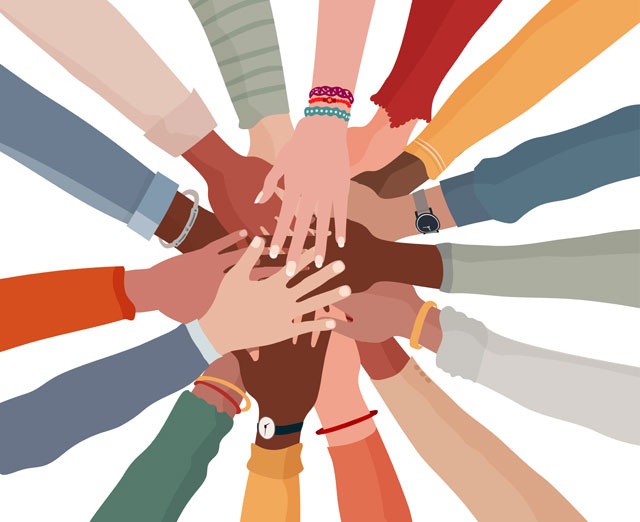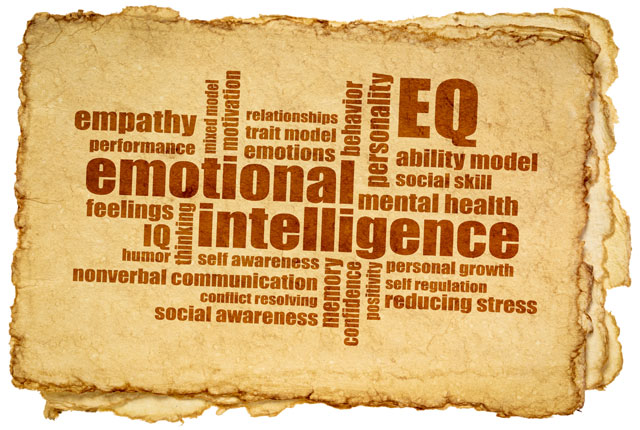A. Socialization Process
Unless you decide to live your life as a hermit, recluse, or monk, you will from time to time, if not regularly throughout the day, encounter some level of social interaction in your life. Essentially, social interaction is the exchanges you experience when in contact with other people. This may seem uncomplicated, but there are many levels of social interaction that can occur, some verbal and some non-verbal, based on the form of communications in which one engages.
While one is still an infant, one learns of the existence of other people outside of oneself.
After the period in which one passes through the blissful stage of childhood and adolescent ignorance into that of responsible adult citizen, it becomes a social responsibility for one to learn the proper way to interact with others.
Without proper use of this knowledge, one is liable to act out in a myriad ways, from minor instances of exhibiting inappropriate manners to major outbursts such as lewd and lascivious public behaviors leading to arrest. Yet, what we speak of here pertains more to an acceptable bottom-line standard for social conduct. Once one surpasses this bare minimum for behaving in public, there is a full range of socially evolved types of interactions that can take place.
B. Social Interactions: Categories Social interactions can be grouped into the following categories:
- Accidental (social contact). This group includes unplanned occurrences that are are unlikely to occur again. Examples include asking a stranger for directions or asking the bus driver to make a specific stop.
- Repeated. While these instances are also unplanned, they may happen again from time to time. Examples include subsequently bumping into your neighbor while walking the dog or running into the same members of your health club when going for a workout.
- Regular. Though these instances are again unplanned, they tend to be very common. In fact, they are so consistently common that their absence may raise a red flag. Examples include checking in with the same doorman upon your return home, dropping off your laundry with the same shop owner every week, or ordering take-out from the same restaurant.
- Regulated. This group is made up of instances that play a fundamental role in one's life; they are planned and regulated either by societal customs or by law and automatically raise red flags if absent. Examples include interaction with co-workers and bosses in a workplace setting, preset appointments with service professionals such as therapists, lawyers, and others, or scheduled get-togethers with family members or friends.
Within the overarching sociological hierarchy, social interaction is more advanced than social behavior, social action, and social contact. Yet, social interaction is not quite as advanced as that of the concept of social relations.
Hence, it has been determined that social interactions, encapsulating social behaviors, social actions, and social contacts, form the basis for what is known as social relations.
C. Varying Definitions of Social Interaction
Generally, social interactions comprise individual behaviors, actions, contacts, or practices. According to some theorists, including pacifists, social interactions require the involvement of two or more people who are equally aware of each other and have each other's self in mind.
This definition does not necessarily mean that all parties needs to be in direct line of sight of one another because interactions can involve persons writing e-mails to one another. Nor does it mean that the parties need to be conducting some type of physical communication because they may be rivals who have purposely chosen to ignore one another.
However, the definition of social interaction does require a mutual orientation whereby all parties are aware of the activity. For this reason, spying on one another would not qualify as a form of social interaction, nor would the behaviors of a rapist and the victim who is treated as a physical object. Under this specific definition, whenever people treat each other as objects, things, or animals, or consider each other as reflex machines, or only cause-effect phenomena, there is an obvious lack of social interaction.
D. Sociologist Carl Couch on Relationships
In the article, "The Structure of Social Relationships," sociologist Carl Couch (1925-1994) attempts to explain the reason for the repetition of certain types of relationships, generation after generation. Couch bases his theories upon the fact that the role of daughter or son bears no meaning without an identified mother or father. This then forces the existence of these roles, as well as perpetuates their continuation throughout history.
Couch defines social relationships as the roles people play, such as father or son, and that they are rather enduring. He differentiates these from social encounters, which he defines as the day-to-day social interactions with other people. Couch also points out that situations become more tension-filled based on the expectations people have with respect to relationships and their existence in reference to one another. According to Couch, our idealized social atmosphere is disturbed when people do not play out their supposed roles as expected or their roles are misidentified.
E. Sociologist Erving Goffman on "Self"
Erving Goffman (1922-1982), author of the book The Preservation of Self in Everyday Life and past president of the American Sociological Association, was interested in the social definition of "self" during interactions with others. He demonstrated that though we can never know another's true self, we can know the part that he or she portrays while we are engaged in contact. Goffman contends that the knowledge we have about another person aids us in how we interact with him or her in a social setting. Our problems tend to arise because of the limited amount of information we have; hence, we go on assumptions and stereotypes as a means of compensating for our lack of insight.
According to Goffman, people only reveal information about themselves that they feel is acceptable, while hiding that which they feel is unacceptable or may be displeasing for others to learn.
F. Sociologist Ralph H. Turner on "Self-concept"
Ralph Turner is the author of numerous works, including Collective Behavior, Social Psychology: Sociological Perspectives, and the Social Context of Ambition. In his piece, "The Self-conception in Social Interaction," he elected to focus on how the self-concept is often used as a shield against the socially reflected self. He put forth the notion that the self-concept is that which we consider to be our real self. Though it is affected by social reflection, this process occurs slowly over time. In fact, according to Turner, self-concept changes so slowly over time that most people do not realize they are changing until after a long period of time has passed and a comparison is able to be made between their behavior in the present and the past. Further, Turner also defined the idea of self-consciousness as the component of self that is responsible for causing the changes. Turner advocated on behalf of the notion that we become self-conscious when a public opinion clashes with our self-concept and that the more frequently we become self-conscious, the more likely we are to adapt our self-concept to that of the mainstream opinion.
G. Nonverbal Behaviors and Proxemics
It has been said that people exhibit nonverbal signs of communication as a means of expressing their authentic selves. While some of these behaviors may be conscious, others are unconscious, meaning they are simply a manifestation of latent feelings that are exhibited to the public through one's body language.Usually the unconscious ones offer more of a revelation.
Nonverbal behaviors are an important element of impression formation. The manner in which one performs an act or holds oneself often provides larger amounts of information to those in observance than a person's verbal offerings.
Examples of nonverbal cues and body language include the couple in which one party is holding on tight and the other is pulling away, the feigning of a smile after a trial or other stressful public event, or the open extension of arms as a way of creating a warm greeting versus the folding of arms across the chest as a means of distancing oneself from another. There are hundreds of subtle signs we get from watching a person's body language. In society, as we are taught and are expected to always behave appropriately, sometimes the only way of telling someone's true feelings or position is to watch for nonverbal cues.
Such observances can be especially useful in situations where people regularly do not tell the truth. Examples include politics, courtrooms, dating, sales, job interviews, and potential scam artists.
While these may be isolated incidents, even during everyday situations, you will encounter individuals who, for a myriad reasons, may or may not be honest in terms of conveying their true feelings. Degrees of confidence, honesty, trustworthiness, sincerity, attention, interest, alertness, and openness can all be ascertained by monitoring a person's body language. If properly read, it is possible to gain a wealth of information about a person, as well as to develop either a comfortable repertoire with that individual when you are aiming to be compatible or to get the upper hand when dealing with a rival.
Taking nonverbal behaviors a step further, we learn about the term "proxemics," which is defined as spatial relationships or humans' inherent appreciation for personal space.
As a species, humans are highly territorial. While we are no longer hunters and gathers or acting out in other such primitive ways, we still exhibit an inordinate amount of defensiveness when our personal space is either threatened or violated. In our daily lives, we regularly contend with issues connected to spatial relationships and territorial boundaries. Consider how often you need to adjust your stride in order not to collide with other people, or how you may monitor your actions when in public so as not to intrude upon other's outings.
For those individuals who live or work in urban areas, the issue of personal space takes on additional pressures. Yet, interestingly enough, it is persons who spend a great deal of time in urban areas that have learned how to better tolerate the limited personal space allocated to them.
Studies conducted on proxemics found that controlling one's personal space was a key factor in achieving personal satisfaction. Hence, if one is able to maintain a personal awareness of daily spatial interactions, then that person has the ability to reduce frustrations while considerably improving his or her overall well-being.
To better accommodate individuals' personal space, developers and urban land planners now regularly employ the principles of proxemics in the design of public spaces, for instance, parks, shopping malls, and restaurants, with peoples' spatial comforts in mind.

































